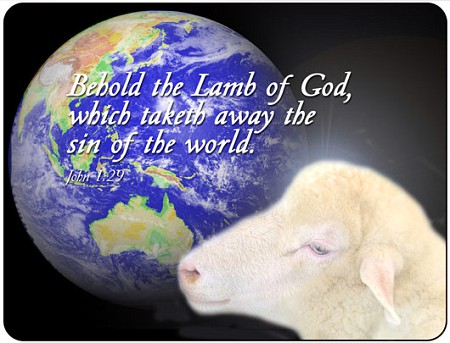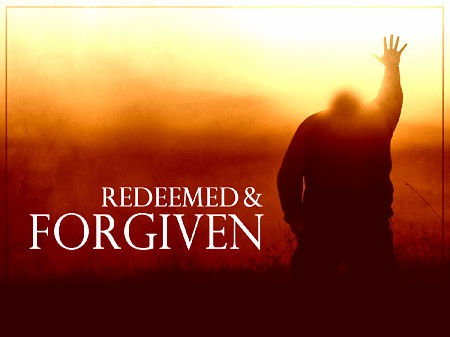 Review & Intro: In the first three chapters of Leviticus, we looked at three different offerings - the Burnt Offering, which covered the worshipper's sinfulness in general and made him acceptable before God; the Grain Offering, which acknowledged God as the Ultimate Provider for material and spiritual well-being bringing the worshipper's sacrifice of praise and service to God; and the Peace Offering, which was for fellowship with God, having peace with God and with others. Chapter 4 & 5 have the last two offerings with details about the Sin Offering and the Guilt Offering. Unlike the others that were voluntary, these were mandatory upon the person having the knowledge of the sin.
Review & Intro: In the first three chapters of Leviticus, we looked at three different offerings - the Burnt Offering, which covered the worshipper's sinfulness in general and made him acceptable before God; the Grain Offering, which acknowledged God as the Ultimate Provider for material and spiritual well-being bringing the worshipper's sacrifice of praise and service to God; and the Peace Offering, which was for fellowship with God, having peace with God and with others. Chapter 4 & 5 have the last two offerings with details about the Sin Offering and the Guilt Offering. Unlike the others that were voluntary, these were mandatory upon the person having the knowledge of the sin. Leviticus Chapter 4
1. What kind of sin does the sin offering take care of? vs.1,2
2. Who is the first person that the Lord gives instruction for concerning the sin offering? vs. 3
3. When the priest sinned, who also became guilty with him? vs. 3
4. What was the priest who sinned to bring for his sin offering? vs. 3
5. What 2 things was he to do at the doorway of the tent of meeting? vs. 4
6. From past studies on the sacrificial animals, what did it represent for him to lay his hands upon the animal? vs. 4
7. The priest was to bring some of the blood to the tent of meeting. What did he do with blood there in front of the veil of the sanctuary? vs. 5,6 -
8. Where else was the priest to put some of the blood of his own sin offering? vs. 7
9. What was he to do with the remaining blood? vs. 7
10. What was to be removed from the animal and what was he to do with it? vs.8-10
11. What was to be done with the hide of the bull and all of its flesh, etc.? vs. 12
Note: The offerer did not get any of the flesh of the sacrifice to enjoy eating as in some of the offerings. It was not burnt on the altar like the whole burnt offering, but other than the blood and fat, it was all burned outside the camp.
12. How do we see Jesus portrayed in this?
- Hebrews 13:11-13
13. Back to Leviticus 4. Next, God gives instruction if the whole congregation commits an error and then the matter becomes "known" to them.(vs.13) What was to be offered for their error as a community? vs. 14
14. Where were they to bring the animal? vs. 14
15. Who were the ones to represent the entire congregation and what two things were they to do there? vs. 15
16. The anointed priest was to take some of the blood to the tent of meeting. What did the priest do in front of the veil when this sin offering was made? vs. 17
17. He was to put some of the blood on the horns of the altar before the Lord in the tent of meeting which would be the altar of incense. What did he do with the rest of the blood? vs. 18
18. He removed all the fat and offered it up as smoke on the altar. Once the priest made atonement for the sin of the congregation, what was true in regard to their spiritual condition? vs. 20
19. Where was the bull burned for the sin offering for the assembly? vs. 21
Note: Next, the Lord gives instruction about the sin offering concerning a leader. This could be one of the leaders over a group of people who made decisions to help with disputes, i. e. the role a judge would play. Look at Exodus 18:17-27 when Moses' father-in-law, Jethro, instructed him on how to break the people down into smaller groups with leaders that would help them settle disputes among them.
20. When a leader was made aware of a sin he had committed unintentionally, what animal was he to bring for his sin offering and in what condition? vs.22,23 -
21. The leader was to lay his hand on the head of the goat and slay it by the bronze altar where they slayed the burnt offering.(vs.24) This was a different altar than the anointed priest and the elders for the congregation. They put the blood on the horns of the incense altar whereas the priest will put the blood of the goat on the horns of the brazaen altar. (vs.25). What did he do with the rest of the blood? vs. 25
22. Again, all of the fat was offered up in smoke on the altar just like was done in the sacrifice of peace offerings (vs.26). Once the priest made atonement for the leader, what was his spiritual condition? vs.26
23. The last group given is the common people. If an unintentional sin became 'known' to them, they were to bring an offering for their sin to the priest. (vs.27) What type of animal were they to bring and what condition were they to be in? vs.28
24. The person was to lay his hand on the offering before he slayed it. Where would he slay it at? vs. 29
25. Where did the priest apply the blood of this offering? vs. 30
26. What did he do with the rest of the blood of the offering? vs. 30
27. The priest removed the fat like was done in the peace offerings and offered it up in smoke on the altar for a soothing aroma to the Lord. After the priest made atonement for him, what was his spiritual condition? vs. 31
28. If he brought a lamb rather than a goat, it was still to be a female without defect. (vs.32). He would lay his hand on the head and slay it in the same place.(vs.33) The priest would do the same thing with the blood, putting it on the horns of the altar of burnt offering, and he would pour the rest of the blood out at the base of the altar. (vs.34)
29. He would remove the fat of the lamb and the priest would offer it up as fire to the Lord. When the priest made atonement for his sin, what was his spiritual condition? vs. 35
Application:
30. Did you notice the requirements of the priests and the elders and even the leaders were more costly than the common people? God made a way for all to be able to bring their sin offering, but it would be good to think about the fact as well that those who had more responsibility to lead were held to a higher standard and a greater sacrifice. Take time to look up and comment on these verses regarding this.
- Luke 12:40-48 -
- James 3:1-2 -
- 1 Timothy 5:17-22 -
Note: We also saw that the people were guilty with the priest who sinned. The entire congregation had to pay for sin that possibly some of the individuals within were not guilty of. Our individual sin does effect others. Remember that.
31. Lastly, and most important, let us think about the fact that this was a sin offering for "unintentional" sin. How many times have we hurt someone without any intent to do so? Still, if a person was offended, sin had been committed. In the burnt offering, it covered the fact that we are all sinners as was passed on to us from the garden of Eden. In the sin offering, it is when an unintentional sin became "known" to the person; when their conscience or a person pointed out to them they had sinned. As soon as they were aware of it, they needed to give a sin offering. This was owning up to personal and specific sin. It is good to take time to examine your heart and see if there is any unintentional sin that you need to confess and forsake. The Lord has made a way for us to be forgiven and cleansed. Comment on the verse below.
- 1 John 1:9 -
32. The book of Hebrews shows that the Lord Jesus Christ was the sinless Lamb of God, whose death was superior to that of bulls and goats, thus making atonement for all men, once for all. Comment on these verses:
- Hebrews 9:11-14 -
- Hebrews 10:1-14 -
- Peter agrees: - 1 Peter 1:13-21-
Jesus is the Sin-bearer, who died for all, that the wrath of a holy God might be appeased and that the defilement of sin might be cleansed. It makes me want to sing, "What can wash away my sin? Nothing but the blood of Jesus. What can make me whole again? Nothing but the blood of Jesus."
33. The teaching of Leviticus on the Sin Offering teaches us about personal sanctification. Whenever we sin, we need to remember that it is the shed blood of Jesus which God has provided for our forgivenss. We need to continue to turn from our sin and confess our sins, for we are called to live separate and holy lives unto Him and for His kingdom's sake. May the study of these offerings and being reminded of what Jesus suffered to pay the price for our sin make us more determined to daily pick up our cross and deny ourselves as we live to glorify our risen Lord ! Amen.
- 1 Thessalonians 4:3-7 -
- Hebrews 12:14
34. Summarize this lesson and post a prayer if you would like.




No comments:
Post a Comment